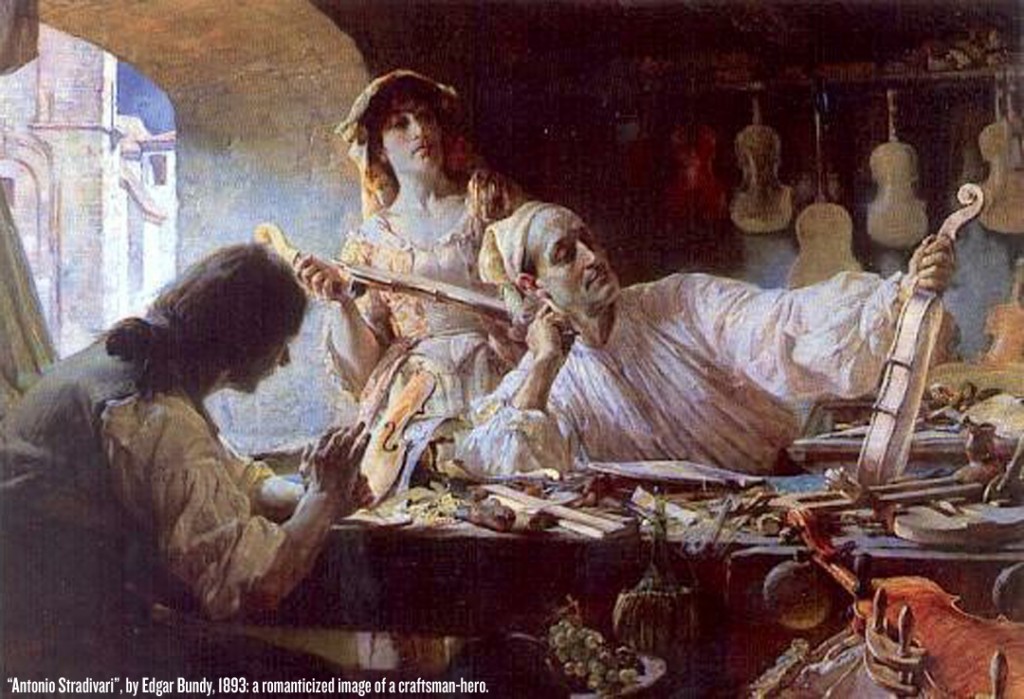The legendary Stradivarius family crafted the most renowned stringed instruments in history during the 17th and 18th centuries. While the techniques of the Stradivarius family have long been up for debate and are not fully understood by modern craftsmen and scientists, it is known for certain that the wood used included spruce for the top, willow for the internal blocks and linings, and maple for the back, ribs, and neck. There has been conjecture that this wood was treated with several types of minerals, including potassium borate, sodium, potassium silicate, and vernice bianca (a varnish composed of gum arabic, honey, and egg white).
But of all the magical properties of the Strads, the most important is the wood used in their fabrication. Specifically, the family used a special wood that had grown in the Italian forests during a cold period which occurred between 1645 and 1715. In the long winters and cool summers, the wood grew slowly, creating the ultimate material which beared the two ideal properties of low density and high elasticity. Experts have long since believed these properties to be unreproducible, but researchers in Switzerland may have discovered a fascinating method that is able to transform regular violins into the miracle Strads. The Independent writes, “Fungi can be used to treat a violin to make it sound like a rare Stradivarius, a study has found. A wood researcher in Switzerland has succeeded in modifying wood for a violin by treating it with special fungi which alters the acoustic properties of the instrument, making it sound almost identical to a Stradivarius violin. Low density, high speed of sound and a high modulus of elasticity are essential qualities for ideal violin wood. In the late 17th and early 18th century the violin maker Antonio Stradivari used a special wood that had grown in the cold period between 1645 and 1715.”
Depending on condition, instruments made during Stradivari’s “golden period” from 1700 to about 1725 can be worth millions of dollars. In 2011, his “Lady Blunt” violin from 1721, which is in pristine condition, was sold at Tarisio auctions for £9.8 million, or about $15.8 million (it is named after Lord Byron’s granddaughterLady Anne Blunt, who owned it for 30 years). It was sold by the Nippon Music Foundation in aid of the Japanese earthquake and tsunami appeal. For more great stories from the world of classical music be sure to visit Classical Music on FEELguide.
SEE ALSO: An Insane Sci-Fi Dream Inspired John Adams’ “Harmonielehre” Score From Tilda Swinton’s “I Am Love”


